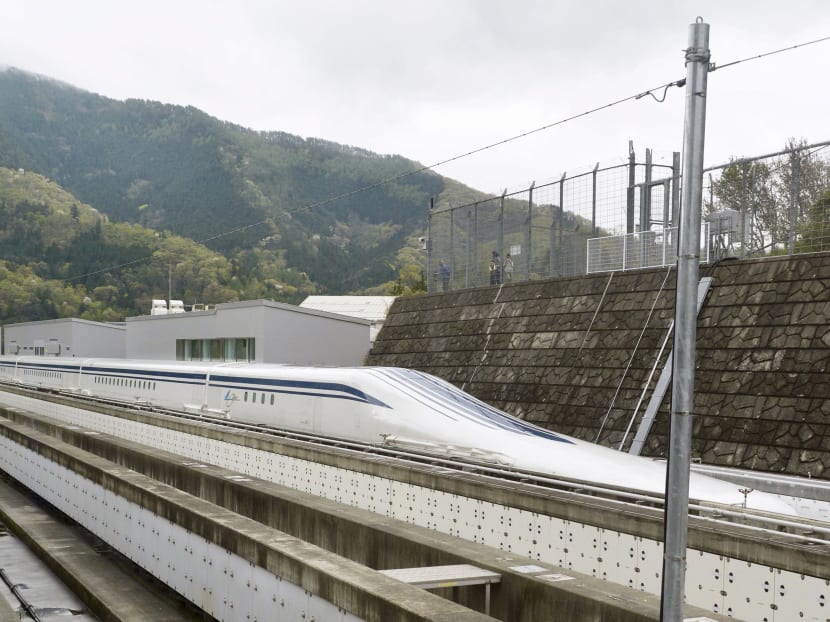Japan train sets record speed of 603kmh
TOKYO — A record for the world’s fastest train has been set — at 603kmh.

A magnetically levitating train operated by Central Japan Railway Co making a test run is seen on an experimental track in Tsuru, Yamanashi Prefecture, in this photo taken by Kyodo April 21, 2015. Photo: Reuters/ Kyodo
TOKYO — A record for the world’s fastest train has been set — at 603kmh.
A Central Japan Railway Co magnetic-levitation (maglev) train travelled at the record-breaking speed during a test run in Yamanashi prefecture, beating the company’s highest speed of 590kmh set last week.
JR Central, as the company is also known, held the record since 2003, when a train it owns travelled at 581kmph.
At the record speed, a Singapore-Kuala Lumpur journey of around 300km would be completed in about 30 minutes, a third of the time cited in the proposed High-Speed Rail project between the two cities.
Media reports have said that Japan is ready to provide funds and expertise to Malaysia and Singapore on the project.
Japan has been seeking to sell its high-speed train technology to Malaysia, the United States and China, and has hosted high-profile travellers such as then California Governor Arnold Schwarzenegger and Transportation Secretary Ray LaHood five years ago.
Prime Minister Shinzo Abe has said the government may provide financing to support JR Central’s bid to provide trains for a Washington-Baltimore line in the US.
Last week’s record-breaking run was part of testing before JR Central starts commercial operations in 2027 on the Tokyo-Nagoya line, which it is constructing at a cost of ¥5.52 trillion (S$62.5 billion).
Maglev trains rely on magnetic power to float the cars above ground, eliminating the friction of steel tracks. The trains start off running on wheels until they are going fast enough for the magnets to kick in and create lift.
In August 2013, JR Central started resuming trials for the maglevs that will complement the Shinkansen bullet-train network, which was introduced in 1964 and where trains now travel as fast as 320kmh.
The company spent five years building a 24km extension to a track to tests trains at 500kmh, the speed at which commercial operations are expected to run.
At that speed, the maglevs will whisk passengers to Nagoya from Tokyo in as little as 40 minutes for the 286km journey.
Worldwide, two maglev lines are already operating.
In Shanghai, a train built with technology developed by Siemens and ThyssenKrupp whisks passengers along at 431kmh from Pudong International Airport to the outskirts of the city’s financial district.
A low-speed version called Linimo, with a top speed of 100kmh, started operations on an 8.9km track in Nagoya in 2005. BLOOMBERG






